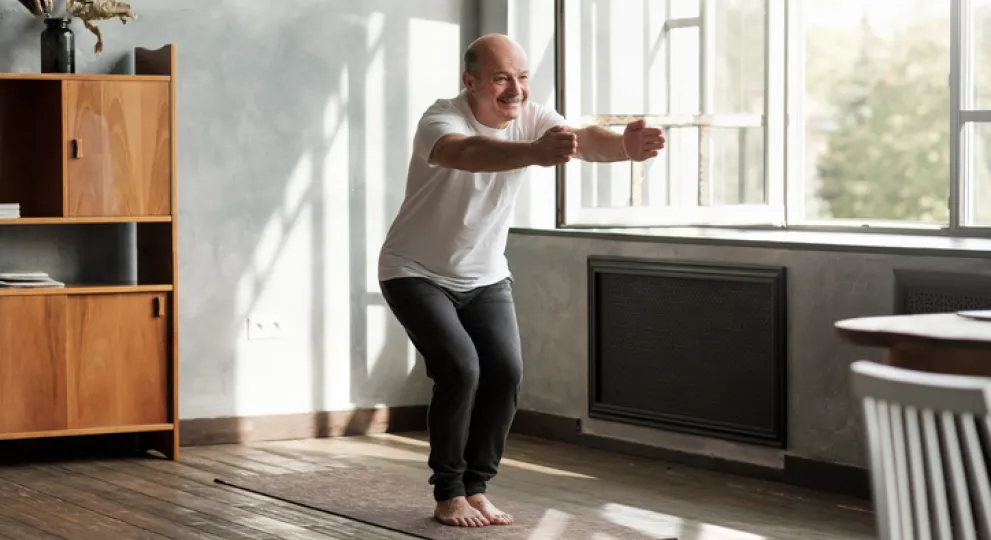Staying active: How exercise can help improve multiple myeloma symptoms
Staying active: How exercise can help improve multiple myeloma symptoms

- Why is exercise important?
People living with multiple myeloma often experience feelings of extreme tiredness and a lack of energy that persists most or all of the time. This is known as fatigue. There are a number of reasons why people experience fatigue; these include symptoms or complications of their multiple myeloma such as anemia (having a low number of red blood cells in your blood), treatments for multiple myeloma or the emotional stress of coming to terms with the diagnosis. One key reason for fatigue may be lack of physical activity, which can also make you feel more frustrated or “low”, especially if you used to be very active. Additionally, if you already feel tired, you may not feel like exercising, which might make these feelings worse. Research has shown that people with multiple myeloma who undertake regular exercise have improved physical function, mood, self-esteem, and quality of life, and that moderate-intensity exercise two to three times per week can improve cancer-related health outcomes.
- Benefits of exercises during the course of the disease
Newly diagnosed patients
Exercise in people with newly diagnosed multiple myeloma can be feasible and safe, but you may be at a higher risk of certain injuries so you should speak to your healthcare team first. Regular exercise, if reasonable, should always be considered.
During transplant
Exercise for people undergoing stem cell transplantation is generally safe and well tolerated. Research has shown that starting some form of exercise before or just after transplantation can improve quality of life and reduce tiredness, especially after discharge from the hospital.
Rehabilitation
People with multiple myeloma may feel generalized weakness due to long periods of reduced physical activity and as a side effect of the medications they are taking, such as steroids. Muscle weakness may reduce normal daily function. Rehabilitation exercises are designed to return strength to the muscles and can be used to target specific areas of the body. Exercises can always be modified to meet individual needs.
- Tips to remain safe while exercising
Because having multiple myeloma can cause damage to bones, it is important to talk to your healthcare team before beginning any new exercises or activities so that they can discuss any possible risks. They may also provide you with a referral to an exercise specialist who can put together a personalized exercise plan for you.
Whatever type of exercise your healthcare team chooses for you to do, it is important to keep in mind some general safety guidelines:
- If you are at a higher risk of infection, it is important to avoid public gyms and swimming pools
- Minimize exercises that can increase the risk of falling
- Avoid lifting heavy weights
- Ensure that you wear appropriate and supportive shoes/clothing
- Build up your tolerance to new exercises gradually
- Always begin any workout session with a gradual warm-up, and take the time to cool down afterwards
- Stay hydrated with plenty of cool liquids, and choose beverages without caffeine
While exercising, it is important to listen to your body. Avoid pushing yourself too hard. If you feel pain or become short of breath, then it is important to stop and rest.
- Exercises suitable for people with multiple myeloma
There are different types of exercises, such as resistance exercises and those that help with strength and balance. A mixed exercise training program can be feasible and safe in people with myeloma. Your healthcare team can tell you what is most appropriate for you.
Resistance exercises
Resistance exercises help with day-to-day activities, such as walking and climbing stairs, by building muscle mass, toning the muscles, and building muscle strength.
Strength exercises
Strength exercises help to strengthen the bones and muscles and can also help with everyday activities.
Balance exercises
Having good balance is important for everyday activities such as walking and to reduce the risk of falling.
Your healthcare team will assess your overall fitness and safety level before you engage in any exercise. You may need to modify or avoid some exercises if you notice new symptoms or limitations to your movement, referring to your healthcare team as needed.









